Author: Will Lovell
Dark ales like Porter and Stout get their signature color as well as their roasty flavors, from highly kilned malts, of which there are a few varieties. Seemingly, the most popular of the bunch is Roasted Barley, which is unique in that it’s made from unmalted barley and contributes deep coffee and chocolate characteristics that some claim also gives the impression of acridity.
Given its high degree of kilning, small amounts of Roasted Barley can be used to impart varying levels of color to beer, though some opt to avoid it out of concern it’ll contribute an undesirable burnt note. One alternative is Carafa I, which the manufacturer lists as a “chocolate roasted malt” that is “characterized by its high color intensity and unique roasting aromas.” Not to be confused with its huskless counterpart, Carafa Special I, Carafa I is often described as imparting a smoother roast character than Roasted Barley.
I’m a big fan of the various styles amber-colored styles of beer, particularly Altbier, which I feels strikes a balance between clean fermentation, noble hops, and a subtle roast note that presents as more toasty and nutty than coffee-like. Historically, I’ve reserved Roasted Barley for my darker ales, while I’ve tended to opt for Carafa I when brewing more delicate styles. While working on my AvgBrü Altbier recipe, I noticed Carafa I and Roasted Barley are kilned to a similar darkness and began to wonder just how different these two common grains are, so I designed an xBmt to test it out for myself!
| PURPOSE |
To evaluate the differences between an Altbier made with Carafa I and one made with Roasted Barley.
| METHODS |
The Altbier recipe settled on by The Brü Club was simple enough to allow any differences caused by the variable to shine through.
AvgBrü Altbier
Recipe Details
| Batch Size | Boil Time | IBU | SRM | Est. OG | Est. FG | ABV |
|---|---|---|---|---|---|---|
| 5.5 gal | 60 min | 36 | 16.5 SRM | 1.05 | 1.012 | 4.99 % |
| Actuals | 1.05 | 1.012 | 4.99 % | |||
Fermentables
| Name | Amount | % |
|---|---|---|
| Llano Pilsner | 10 lbs | 85.11 |
| Munich Malt | 1 lbs | 8.51 |
| Carafa I OR Roasted Barley | 8 oz | 4.26 |
| Caramunich Malt | 4 oz | 2.13 |
Hops
| Name | Amount | Time | Use | Form | Alpha % |
|---|---|---|---|---|---|
| Magnum | 15 g | 60 min | Boil | Pellet | 12 |
| Tettnang | 55 g | 30 min | Boil | Pellet | 2.2 |
| Tettnang | 55 g | 5 min | Boil | Pellet | 2.2 |
Yeast
| Name | Lab | Attenuation | Temperature |
|---|---|---|---|
| Kaiser (G02) | Imperial Yeast | 77% | 32°F - 32°F |
Notes
| Water Profile: Ca 61 | Mg 9 | Na 9 | SO4 90 | Cl 69 |
Download
| Download this recipe's BeerXML file |
I started my brew day by adding identical volumes of RO water to separate Delta Brewing System AIO units, adjusting each to my desired profile, then setting the controllers to heat them up before weighing out and milling the grain.
Once the water for each batch was adequately heated, I incorporated the grains then checked to make sure they were at my target mash temperature.
While the mashes were resting, I prepared the kettle hop additions.
When each 60 minute mash was complete, I removed the grains then boiled the worts for 60 minutes, adding hops at the times listed in the recipe.
At the completion of each boil, I quickly the chilled the worts, transferred identical volumes to sanitized FermTanks, then took refractometer readings showing both were at the same target OG.
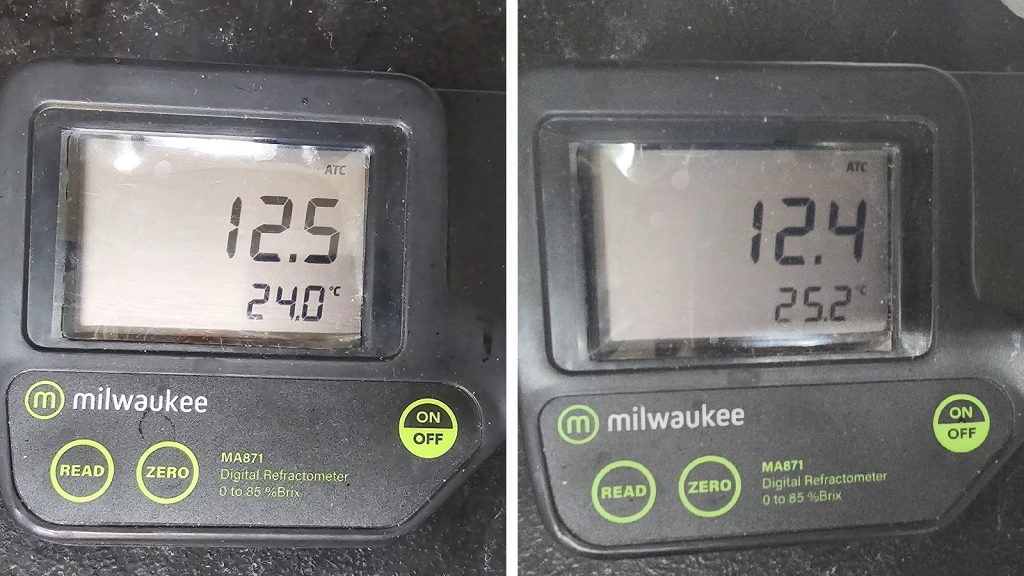
The filled fermenters were connected to my glycol rig and left to finish chilling to my desired fermentation temperature of 62°F/17°C for a few hours before I pitched a pouch of Imperial Yeast G02 Kaiser into each.
After 4 days, I raised the temperature in the chamber to 68°F/20°C and let it sit for another 4 days before taking hydrometer measurements showing the beers were at the same FG.
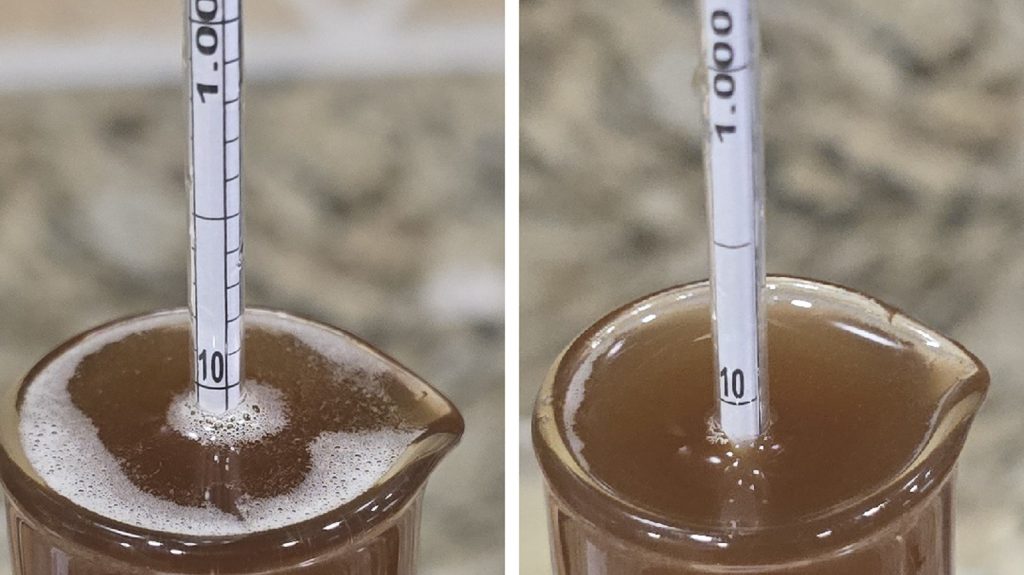
At this point, I pressure-transferred the beers to sanitized kegs, which were placed in my keezer and left on gas for 3 weeks before they were ready for evaluation.
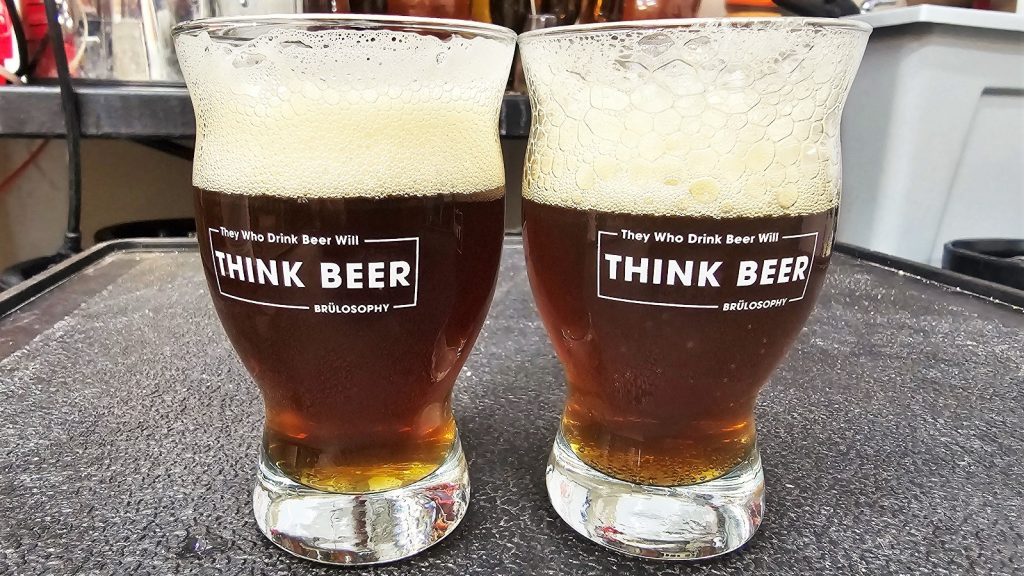
| RESULTS |
A total of 20 people of varying levels of experience participated in this xBmt. Each participant was served 1 sample of the beer made with Carafa I and 2 samples of the beer made with Roasted Barley in different colored opaque cups then asked to identify the unique sample. While 11 tasters (p<0.05) would have had to accurately identify the unique sample in order to reach statistical significance, just 7 did (p=0.38), indicating participants in this xBmt were unable to reliably distinguish an Altbier made with Carafa I from one made with Roasted Barley.
My Impressions: Out of the 6 semi-blind triangle tests I attempted, I correctly identified the odd-beer-out 3 times, and those were largely guesses. I perceived both beers as having the same subtle nutty roast character I expect from an Altbier with no hint of coffee, dark chocolate, or acridity.
| DISCUSSION |
Dark grains are used to create styles ranging from inky black Stout and Porter to amber styles such as Altbier, and while the produced using a largely similar process, many believe the various types of dark grains impart unique characteristics to beer. Interestingly, tasters in this xBmt were unable to reliably distinguish an Altbier made with Carafa I from one made with Roasted Barley.
One plausible explanation for this result is that the amount of roasted grains used in this recipe simply wasn’t enough for the unique characteristics of each to be perceptible. However, this xBmt was inspired to some degree by the numerous past xBmts comparing various roasted grains at higher usage rates that also returned non-significant results, which may indicate Carafa I and Roasted Barley are more similar than they are different.
From the time I started brewing, I was led to believe that Roasted Barley is the dark grain used for Stout as it contributes the roasted coffee flavors that style is known for, while Carafa I is more appropriate for subtler amber styles like Altbier because it imparts less harshness. These results have me wondering if my perspective is perhaps built on the beliefs and anecdotes of others, as my experience indicates these two grains are quite similar. I’m now interested to see how things would play out in a darker style relying on a higher proportion of roasted grains, but as for me now, I’ll be using whatever’s cheapest, at least when making styles like Altbier.
If you have any thoughts about this xBmt, please do not hesitate to share in the comments section below!
Support Brülosophy In Style!
All designs are available in various colors and sizes on Amazon!
Follow Brülosophy on:
FACEBOOK | TWITTER | INSTAGRAM
If you enjoy this stuff and feel compelled to support Brulosophy.com, please check out the Support page for details on how you can very easily do so. Thanks!


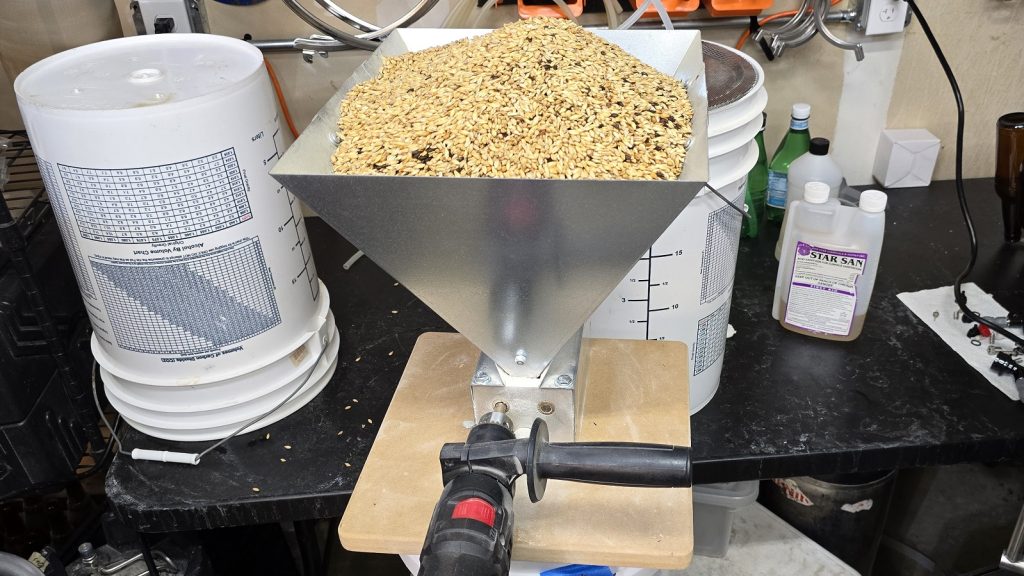
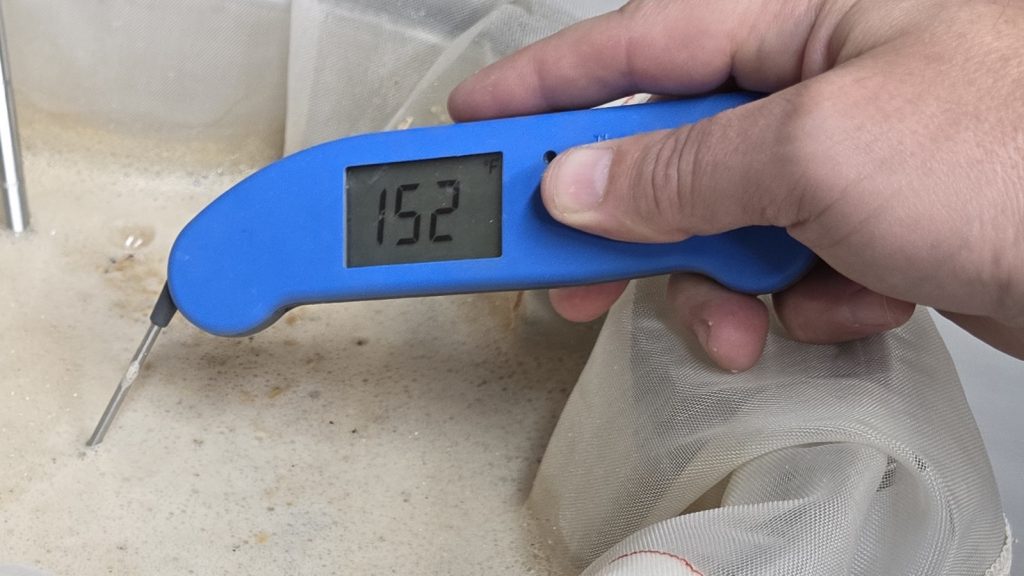
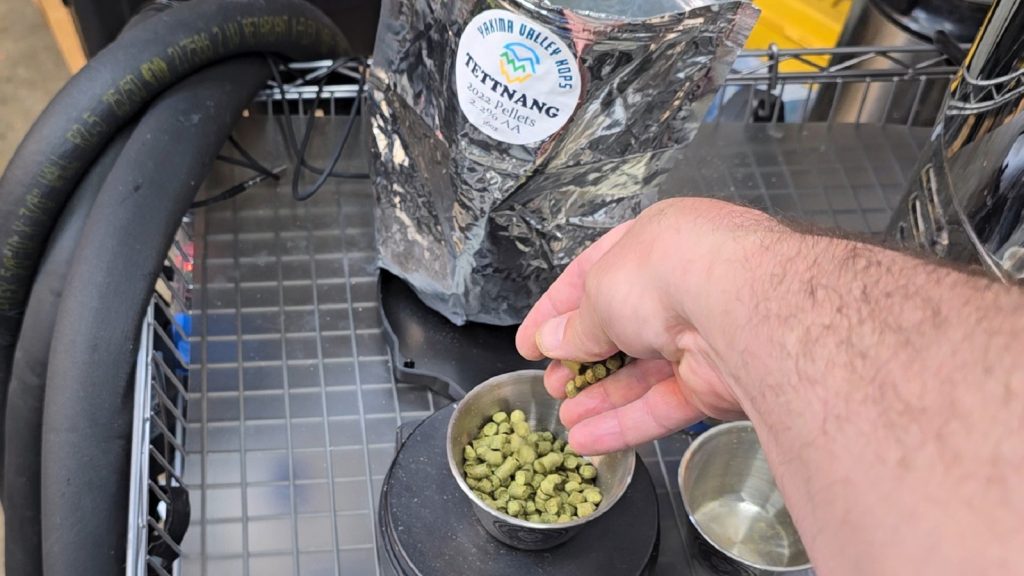
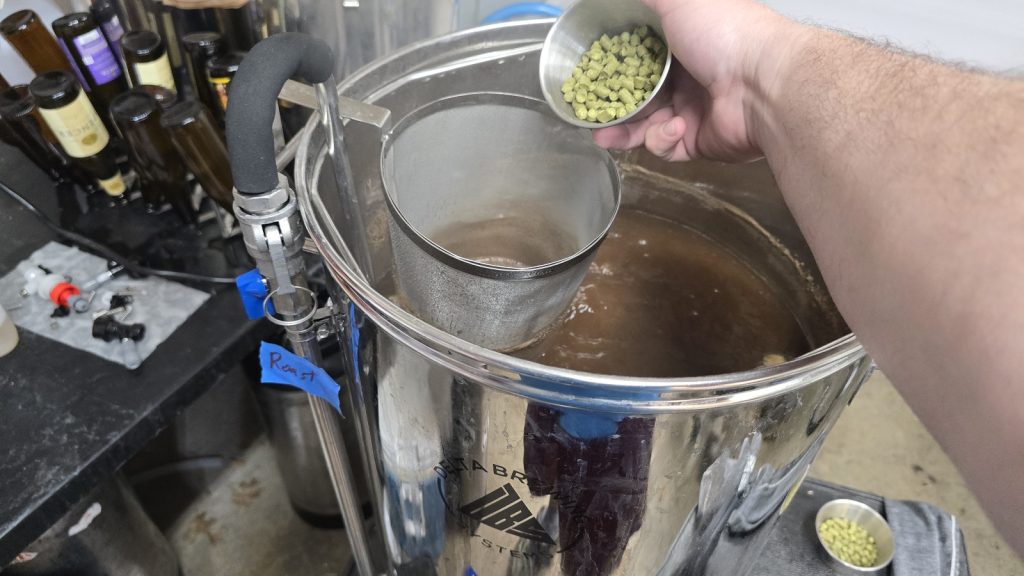
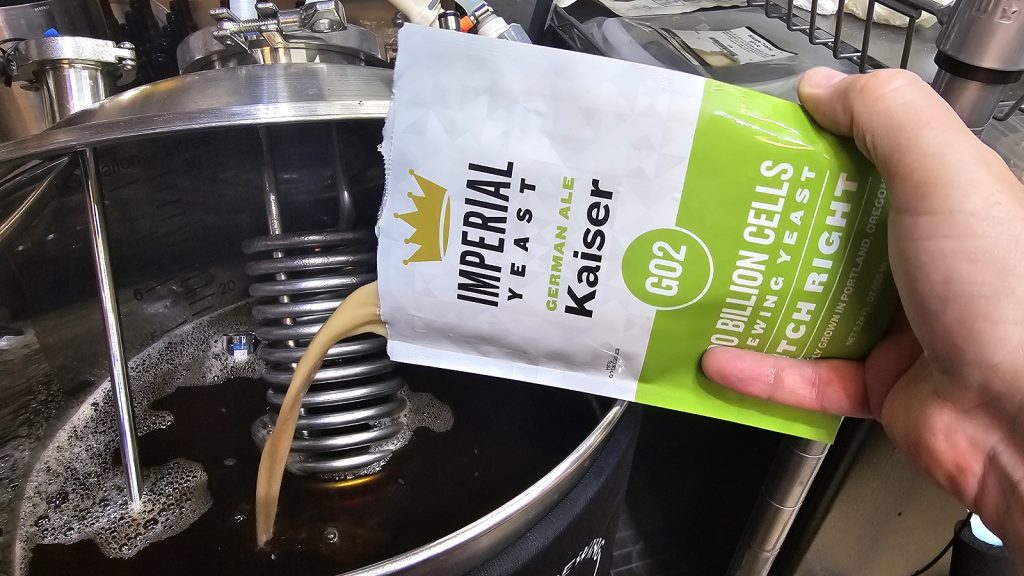











10 thoughts on “exBEERiment | Grain Comparison: Carafa I vs. Roasted Barley In An Altbier”
Should have used carafa I special due to its lack of husk
Carafa I is a great option, in both husked and huskless, but after this xBmt I have no problem using other roasted grains, perhaps in a lower percentage depending on style and desired color.
I meant more for comparison reasons
I could have, its been done with Carafa II and came back non-sig, but I guess I could have tried it in an altbier with Carafa I?
https://brulosophy.com/2022/03/14/exbeeriment-grain-comparison-carafa-ii-vs-carafa-special-ii-in-a-schwarzbier/
Briess Roasted Barley: 220L
Weyermann Roasted Barley: 378-491L
William Crisp Roasted Barley: 550-560L
Simpsons Roasted Barley: 488-713L
Methinks it might be important to not only say which brand you used, but also not extrapolate these results past just that particular roasted barley.
It was Briess, which was spec’d at 300L from the place I bought it from. Picture made it on Facebook page with side x side but not the article for some reason? I’ll chat with the editor.
If you think of Guinness for Stout, they only started to use roasted barley in the 60’s. They were one of the last to switch from black patent malt to roasted barley.
http://barclayperkins.blogspot.com/search/label/roast%20barley
For most of the history of Stout, first brown malt, then black patent malt was used. Carafa is clearly black patent malt. Roast barley is cheaper, so brewers also did this experiment (after it was legal to do so) and got the same results, and through this they could make more profit, or sell their beer cheaper.
Why don’t you chew both and describe the flavor differences ?
I think chewing gives a great approximation, but not the full picture. The idea is figure out what it tastes like in the actual beer and chewing only tells me what it tastes like in my mouth. Similar with Hops, you can smell, rub in your hands, make teas, etc to get an idea, but it still hits different in beer.
I have switched to carafa malts entirely, for one simple reason. If the husks have been scorched, there tends to be a lingering burnt “acrid” bitter astringency (ok, enough descriptors…) in about 1/6 of my dark beers (porters and stouts). My PhD analytical chemist friend immediately pointed this out to me, as “bad grain”.
I’ve not experienced this aweful flavor of burned husks since. Perhaps it’s just better QC by the carafa folks, but I’ve not had to pour out and dark beers using carafa malts.